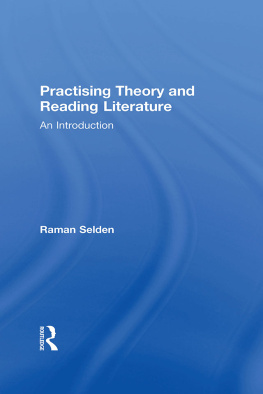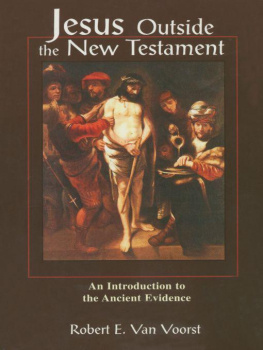R. Alan Culpepper
Cornelis Bennema has tackled one of the most difficult challenges facing New Testament narrative critics: the construction of a comprehensive theory of characterization that interpreters can use to understand the subtleties of the roles of the characters in New Testament narratives. Developing a framework for the interpretation of biblical characters is challenging for several reasons. (1) There is not a readymade theory of characterization in ancient or modern literary theory that is adequate for this purpose. For example, are characters defined by traits or plot functions, and how can interpreters analyze the construction, roles, and functions of characters without being reductionistic? (2) Biblical interpreters have not settled the issue of whether theories of characterization drawn from modern literary criticism can or should be used in the interpretation of ancient narratives. (3) Studies of characterization in the Gospels and Acts have proceeded (at least since the demise of the Literary Aspects of the Gospels and Acts group in the Society of Biblical Literature) in provincial conversations, with interpreters of each of the Gospels (and Acts) talking only to each other. And, (4) while there has been what might be described as a burst of interest in characterization in the past five years, with fascinating interpretations of individual characters, this work has proceeded largely without corollary advances in the theory of characterization. Interpreters, in the main, are therefore still using, modifying, or reacting against the theoretical frameworks used by those of us involved in the first wave of narrative criticism thirty years ago.
Bennema has stepped into this gap, and this volume is not his first move toward a theory of characterization. In Encountering Jesus: Character Studies in the Gospel of John (2009) Bennema set forth a framework for locating characters along various continua (see the Preface). I applauded Encountering Jesus as a book I have been waiting for because it was the first effort I had seen to develop an adequate theoretical model and apply it to all the characters in the Gospel of John. This current volume represents a significant advance over Encountering Jesus, refining rather than abandoning his earlier work. In this volume Bennema engages the study of characterization in Mark and Acts as well as John (examining both current scholarship and selected characters in these three NT books), surveys and critiques current literature on characterization, examines both ancient constructions and modern theories of characterization, and makes the case for the legitimacy of using modern literary theory in the study of characterization in the NT narratives.
Bennema identifies three features of the dominant paradigm in current study: (1) the contrast between Hebraic and Hellenic characterization, (2) the contrast between ancient and modern characterization, and (3) the practice of applying modern literary methods developed for the study of fiction to the ancient historical sources. In response, he concludes that there is no consensus on how to analyze, classify, and evaluate characters, and many scholars tend to oversimplify most New Testament characters, using fixed, reductionist categories. The conclusion is obvious: we need a comprehensive, nonreductionist theoretical framework in which we can analyze, classify, and evaluate the New Testament characters and determine their possible significance.
Bennema challenges the commonly accepted notions of the sharp contrasts between characters in Greco-Roman and Hebraic literature as well as the accepted dichotomy between ancient and modern characters, arguing that the differences in characterization in the Hebrew Bible, ancient Greek literature, and modern narrative are differences in emphases rather than kind. He therefore advocates (1) the value of locating characters along continua of complexity, development, and penetration into the characters inner life; (2) the legitimacy of using modern literary methods and models; and (3) the importance of this model of inference and classification for interpreting New Testament characters and their roles.
Following this discussion of theory and other approaches to characterization, Bennema develops the elements that define a plausible historically informed modern reader and applies his model to selected characters in Mark, John, and Acts. These character studies are insightful on their own, quite apart from the theoretical discussion that precedes them. The theoretical discussion, however, is the heart of the book. Bennemas engagement with the debates about New Testament characters and current approaches to the study of characters and characterization sets the stage now for the debates and refinements that will no doubt follow.
Scholarship advances by means of creative, original proposals and careful assessments and engagement with others workand this book offers both.
R. Alan Culpepper
McAfee School of Theology, Mercer University
This book proposes a paradigm shift in the study of character in New Testament narrative (or a new paradigm if one thinks there was not one to begin with). There is currently no consensus on how to study character in either literary theory or biblical studies. Nor is there a comprehensive theory of character. Many New Testament scholars appear to operate with a pattern or paradigm that has three assumptions: (i) characters in the Greco-Roman literature are Aristotelian, that is, flat or types; (ii) characters in the Gospels (and Acts) are not like characters in modern fiction (round, individualistic, psychologized) but resemble Greco-Roman characters (flat, one-dimensional); (iii) it is acceptable to use insights from modern literary methods to study ancient characters. While these scholars rarely justify this paradigm and sometimes overlook its inherent inconsistency, other scholars argue that modern theories of character in fiction should not be used to analyze characters in the Bible. In reply, this book introduces a comprehensive theory of character in New Testament narrative in four steps. In Chapter 1, I will identify a dominant pattern or paradigm of character reconstruction in the New Testament. In Chapter 2, I will deconstruct this pattern/paradigm, showing that characters in antiquity and modernity are more alike than different and that using modern methods to analyze characters in antiquity is both inevitable and legitimate. Then, in Chapter 3, I will propose a new paradigm for character reconstruction, which consists of three aspects: (i) character study in text and context; (ii) character analysis and classification; (iii) character evaluation and significance. Finally, in Chapter 4, I will validate the new paradigm by applying the theory to select characters in the Gospel of Mark, the Gospel of John, and the Acts of the Apostles.









